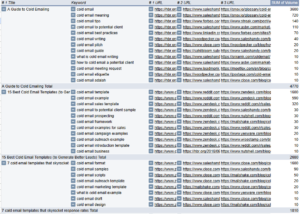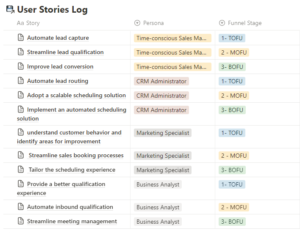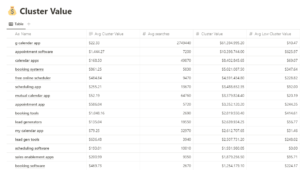I built a SERP similarity analyzer and checker that shows you how similar or different the search results are for two separate queries.
It uses Moonlit’s new features, LLaMa-2, and the Scale SERP API to accurately scrape Google search results.
Try it here: SERP Similarity Checker App
How the SERP Similarity Checker works:
- Enter the two queries that you want to check for similarity
- The app uses the Scale SERP API to accurately scrape the search results of the two queries
- It’s currently set to US results within the app, and set to show the top 3 pages from search results.
- The country and amount of results analyzed can be changed within the app settings.
- The app uses LLaMa-2 to analyze the similarities and differences between the two queries and search results.
- The app outputs an analysis, of an overlap list, and the raw output of the two SERPS.
- The app provides insightful recommendations about how to address both queries within your pages.
- Use the analysis to determine if you should have two separate pages, and what each should focus on.
What is SERP similarity and Why does SERP similarity matter?
SERP similarity is a phrase used when comparing the similarity of search engine result pages (SERPS) based on two or more unique queries.
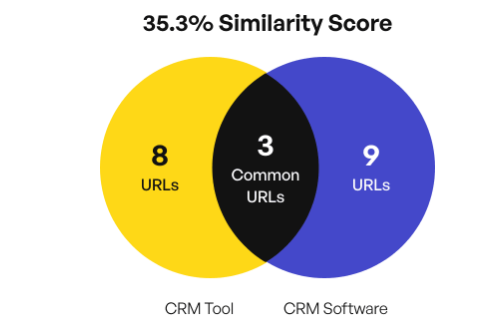
If two separate queries yield the same pages in the same order on a search result page, the SERP similarity is high.
If the two search result pages have different results or they are in different orders of ranking, the SERP similarity is low.
Importance of SERP similarity to search engines
Search engines like Google can determine that some queries mean the same thing. For example, Searching for “NFT ticket platform” and “NFT ticketing platform”.
These queries mean the same thing, with a slight difference in spelling.
To understand all the different ways users will enter a query, Google will use Natural Language Processing techniques to determine which queries can be grouped to serve the same search results.
However, the search “NFT ticket marketplace” may yield slightly different search results, as it’s more unique than the first two. Google needs to be able to understand the intent and meaning behind every query, for billions of searches every day.
That’s why grouping common queries to yield similar search results makes sense. It’s a computational cost-saving strategy. It would be much more expensive to serve unique results to every search user every time they search for something.
Importance of SERP similarity in SEO
SERP similarity is important for SEO because it helps us determine how many unique pages are needed to rank for a set of target queries, or keywords.
If you try to optimize your page to be relevant and rank for two different queries, and the SERP similarity between them is low, you’ll have a harder time ranking for both queries.
If the SERP similarity is high, it’s much easier to rank those two separate queries.
My experience with SERP similarity
When I was newer to SEO, I put very little thought into SERP similarity.
I hardly checked the search results at all. I would spend most of my time inside tools like SEMrush, Ahrefs, and Google Search Console.
(None of these tools used to have SERP similarity built-in by the way)
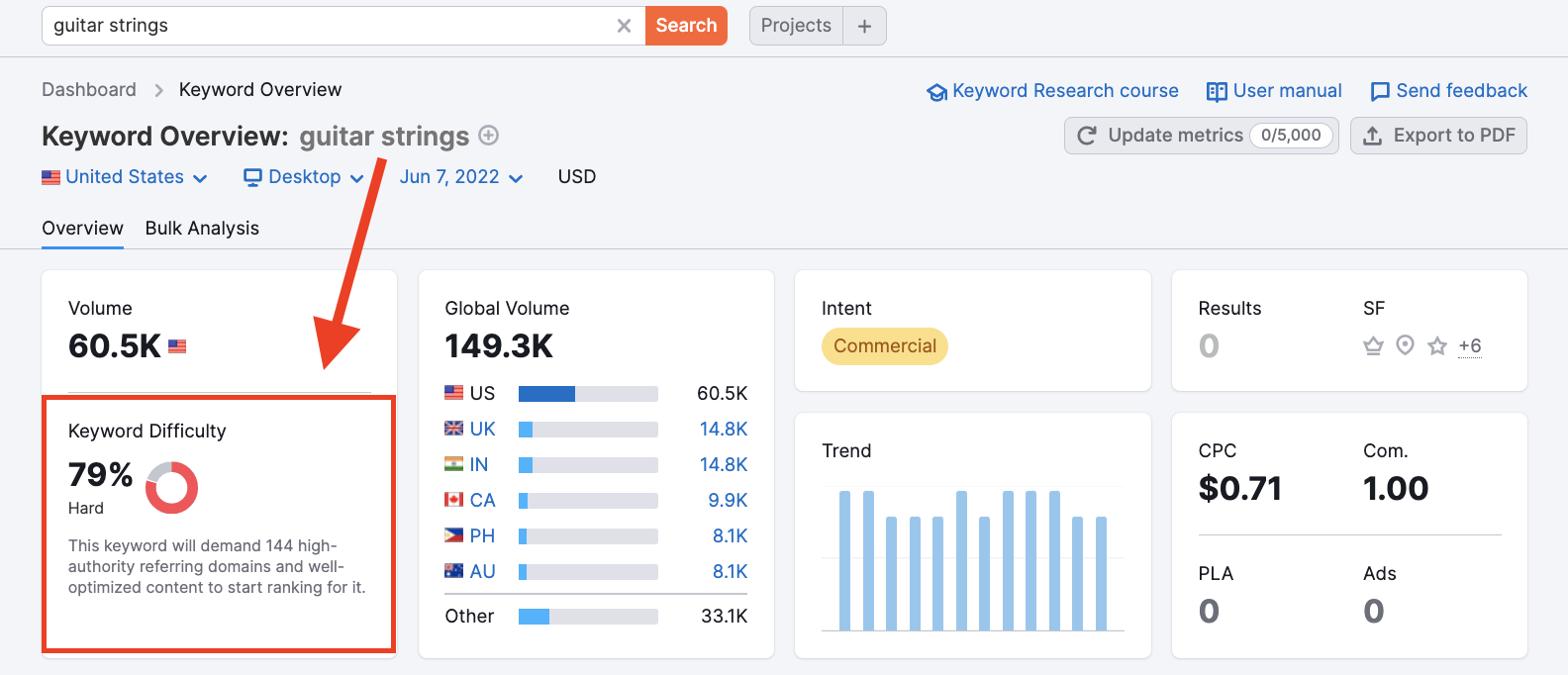
This resulted in “SERP blindness”. Meaning, that I didn’t know if two keywords were compatible, should be on the same page, or if they even had the same search intent.
I was “SEOing” blind. I later learned how much nuance there is to queries, keywords, and search results.
I discovered many marketers don’t think about SERP similarity
Throughout the years I’ve noticed that marketers who are newer to SEO make this same mistake all the time.
I’ve even asked people: “How do you determine if two separate keywords should go on the same page?” – and the results usually have thing to do with checking the keyword research component of a popular tool. Only more experienced SEOs will mention anything to do with checking the actual search results.
I always check the SERPs today
Today I understand the importance of SERP similarity and I check the actual search results for the exact queries in the exact location I want to rank for, every time. And while tools like this may make it easier, I still recommend getting into the habit of manually reviewing SERPs.
If I see different search results for two queries I think are similar, I use that as the main clue to determine if two queries can go on the same page.
Google shows us everything we need to know to rank right on the search results. It’s just a matter of taking the time to look and see and analyze.
Example Outputs of the SERP Similarity Checker
This app provides a lot of output, too much to place in plain text on this blog post. However, here’s an example.
This is what the overall output looks like:
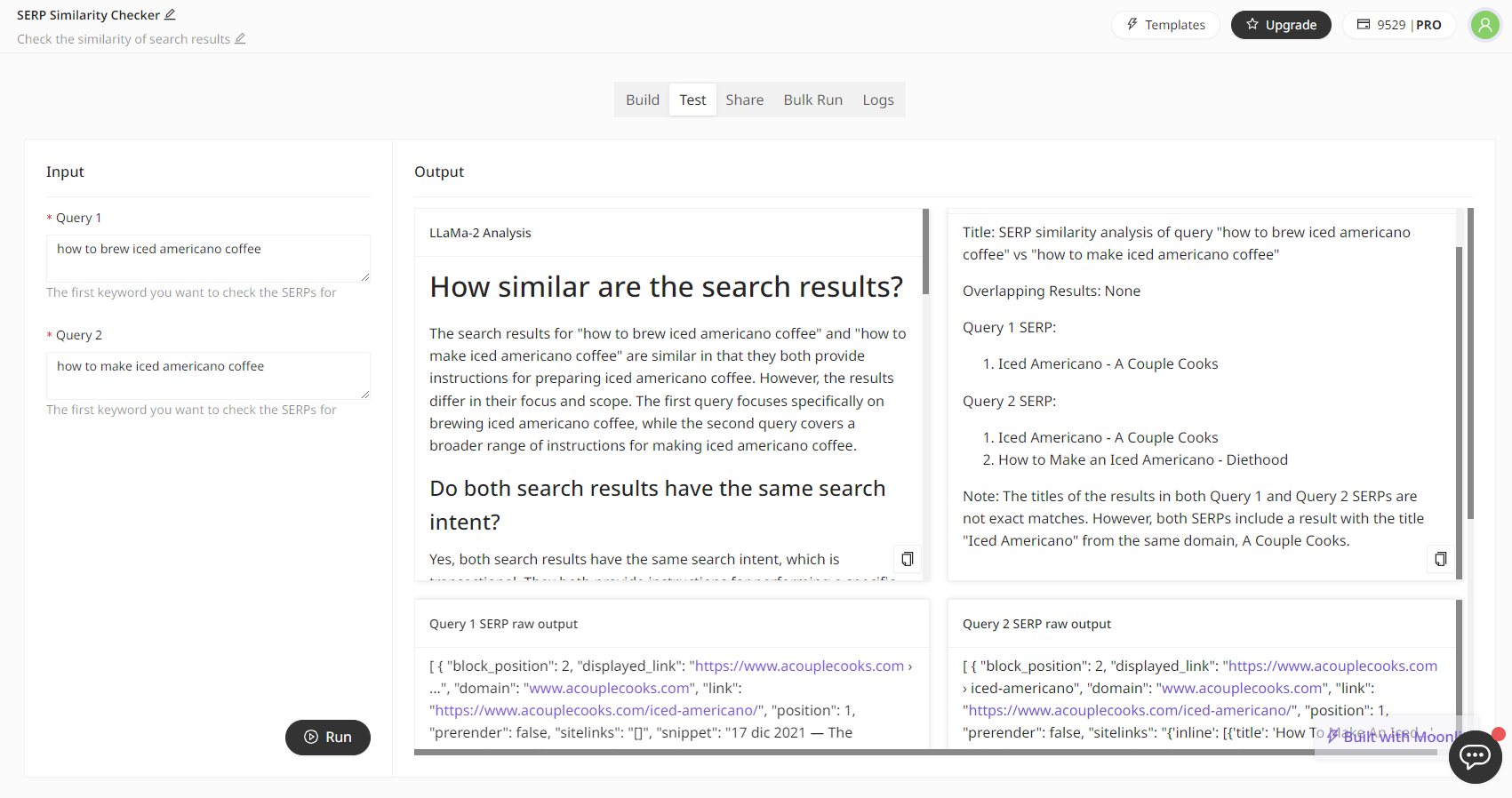
It contains the LLaMa-2 Analysis, which provides detailed insights. It also provides a quick overlap of result output and the raw output of the SERPs API results.
This app answers the following questions for you:
- How similar are the search results?
- Do both search results have the same search intent?
- Can the two queries go on the same page?
- What are the most common words found in the title tags and meta descriptions?
- What kind of URLs are being used by the ranking pages for each query?
Here is a full example output for the queries “how to brew iced americano coffee” and “how to make iced americano coffee”:
How similar are the search results?
The search results for “how to brew iced americano coffee” and “how to make iced americano coffee” are similar in that they both provide instructions for preparing iced americano coffee. However, the results differ in their focus and scope. The first query focuses specifically on brewing iced Americano coffee, while the second query covers a broader range of instructions for making iced Americano coffee.
———————————————
Do both search results have the same search intent?
Yes, both search results have the same search intent, which is transactional. They both provide instructions for performing a specific task, in this case, making iced americano coffee.
———————————–
Can the two queries go on the same page?
Yes, the two queries can go on the same page, as they have the same search intent and provide complementary information. Recommendations for ensuring the page can appear on both SERPs include:
* Including both phrases in the title tag and meta description to increase relevance and confidence.
* Using a page-level URL structure that includes the primary keyword, such as “/coffee/brewing-iced-americano” or “/coffee/making-iced-americano”.
* Ensuring the page content is comprehensive and covers both brewing and making iced americano coffee.———————————————
What are the most common words found in the title tags?
The most common words found in the title tags for both SERPs are:
* “iced americano coffee”
* “brewing”
* “making”———————————————————
What are the most common words and phrases found in the meta descriptions?
The most common words and phrases found in the meta descriptions for both SERPs are:
* “learn how to make iced americano coffee”
* “iced americano coffee recipe”
* “brewing iced americano coffee at home”
* “steps to make iced americano coffee”—————————————————————————————
What kind of page-level URL structure of the URLS in the search results is being used, excluding domains?
The page-level URL structure of the URLs in the search results includes:
* “/coffee/brewing-iced-americano”
* “/coffee/making-iced-americano”
* “/iced-americano-coffee-recipe”
* “/how-to-brew-iced-americano-coffee”
* “/how-to-make-iced-americano-coffee”Examples of page-level URL structures that could be used for a page that covers both brewing and making iced americano coffee include:
* “/coffee/brewing-and-making-iced-americano”
* “/coffee/iced-americano-brewing-and-making”
* “/coffee/how-to-brew-and-make-iced-americano”
* “/iced-americano-coffee/brewing-and-making”
* “/iced-americano-coffee/how-to-brew-and-make”
This example shows that these two queries are indeed very similar. Now I know that I only need to make one page to rank for both terms.
Limitations of this SERP Similarity Checker
This tool is experimental. It’s using LLaMa-2, which is Meta’s new model intended to compete with GPT4, and with lower costs.
It’s also using a new API integration to gather SERP data. You may also need a paid subscription to Moonlit to use the SERPs API tool.
As a result, there may be issues with both the language model and the SERP API.
For example, you might find that it reaches the token limit, it looks like this:
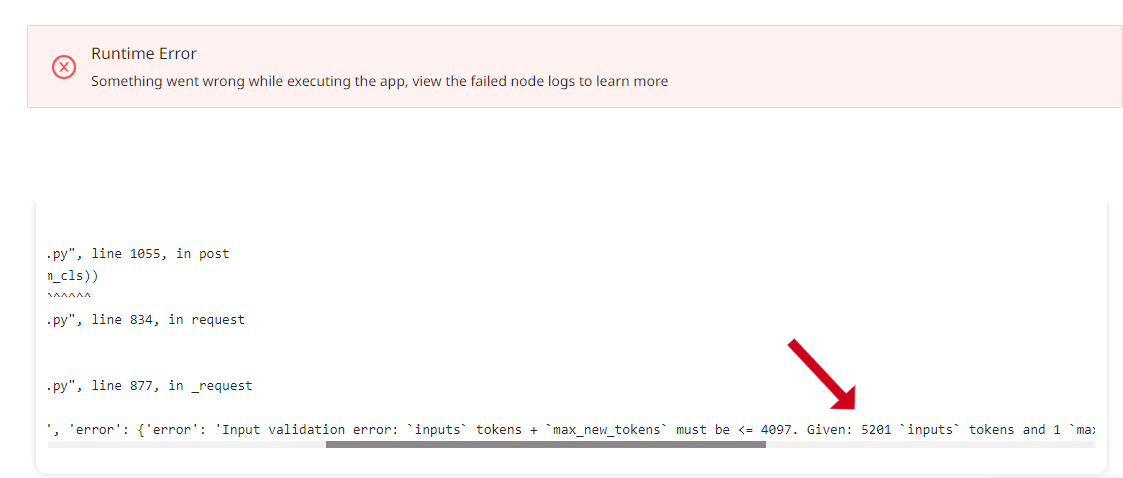
You can see in the image above it said the output is 5,201 tokens, and the max is 4,097. That is just a quirk of the language model API. We will get access to higher token LLaMa-2 queries in the near future.
I’ve also noticed that the SERP API does not always pull in 3 results per query. This is also a limitation of the API.
It also would be nice to get a visualization diagram showing the similarities and differences. But the app can’t do this at the moment. Maybe in the future when the APIs have more features.
Build your own no-code SERP Similarity Checker App
I built this app in less than an hour with Moonlit. A brand new no-code AI platform.
It’s perfect for stringing multiple inputs and tools together into larger and more consistent outputs.
Which I find is perfect for SEO compared to prompting ChatGPT over and over again.
If you want to learn how to build apps just like this one, and many other AI-powered SEO tools, join my AI SEO Academy.
You’ll get full behind-the-scenes access to learn how to make your own tools. And you’ll connect with likeminded AI enthusiasts.
